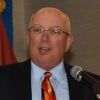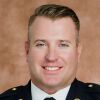Chief John M. Buckman III and Chief Jason Caughey will present “Culture in Combination Departments” at Fire-Rescue International in Dallas on Wednesday, Aug. 14, 2024. Learn more and register for the event.
Fire department culture is impacted by a variety of factors – beliefs, attitudes and perceived rules that set the behavioral expectations of the firefighter.
Beliefs have seen the most change over time. Volunteer firefighting started in 1736 when Benjamin Franklin established the Union Fire Company, the first volunteer fire department that had a mission to prevent fires and fight fires. Volunteers had to bring six buckets to the membership meeting to be used in fire suppression.
Today, a firefighter fills out an application, passes a criminal background check and completes a basic training program. The 911 requests are more diverse than they were in 1736, of course, but the expectation of response originated all those years ago. The public expects the fire department to show up – and those requests grow greater and greater every year. After all, the fire department does not have the option of rejecting a 911 call.
When a person becomes a volunteer firefighter, it is not so much about firefighting as it is about customer service. As such, during new member orientation, the “service attitude” should be explained to the new member. Additionally, leadership needs to continue to communicate and demonstrate that service attitude.
So, how do you instill this attitude in volunteers? It starts with expectations.
Setting expectations
Clearly and succinctly explain the individual performance expectations for members. Members need to understand how those performance expectations will be measured and enforced. Examples of performance expectations: attend training, respond to 911 calls, receive and accept positive and negative feedback, maintain physical conditioning, be nice, and socialize with other members. Let’s consider some of the most critical elements of setting expectations:
Leadership behavior: Members will observe the culture of an organization through leadership behaviors. Leaders set the example with the way they act, dress and talk around other members. Firefighters will look to their officers to set a positive example that demonstrates the established values and goals.
Feedback: Feedback is important to establishing behaviors too. Members should feel appreciated, so give them feedback that shows your appreciation. Members don’t usually break rules, and as the leader, you should “catch them doing something right.”
Teamwork: Firefighters work in teams of two to four every day. How a member performs within the team must be an established expectation. The key to team dynamics comes back to communication, cooperation and collaboration. How a member performs in those three areas will be the key to establishing and maintaining a positive culture.
Traditions: The fire service has many strong and long-lasting traditions. Traditions are an important part of culture. Members need to know and understand the traditions of their department. Furthermore, firefighters feel a connection to the past very deeply and wish to carry on these fire service traditions in their careers. Younger or newer members won’t understand traditions and the values that come along with those traditions. As members achieve seniority in their career, many want to become mentors to younger firefighters and are anxious to pass these traditions on to the next generation.
Final thoughts
These foundational principles will help your department establish expectations that are clear for all members, helping them forge a successful path forward to serve their community.


















